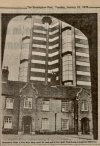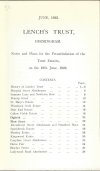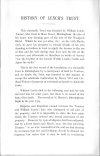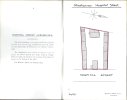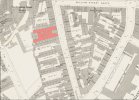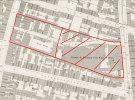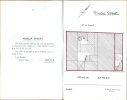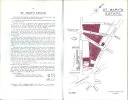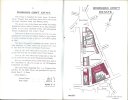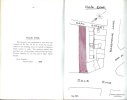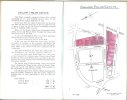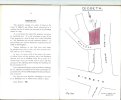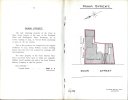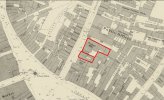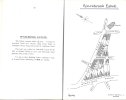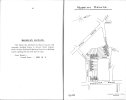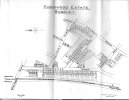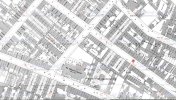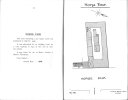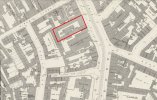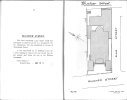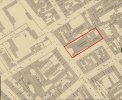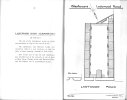Dennis Williams
Gone but not forgotten
Now lets go right back to a Middle Ages benefactor…the only one of many folk whose charity is still going strong. And, as per, one thing leads to another…as we shall see…

In 1525 William Lench, a tanner by trade and living in Moor Street, then called Mole Street, decided to leave his wordly wealth to nineteen of his friends by a Deed of Gift dated 11th March 1525. His will of 24th March 1525 asked that the monies be used for works of charity.
In a Declaration of Trust dated 1540, twelve Trustees were appointed to apply and distribute the income and profits. These twelve good men decided that the money should be spent in two ways:
1. in repairing the ruined ways and bridges in and around the town of Birmingham
2. in bestowing the same on the poor living within the said town, where there was the greatest want .

Until 1838 and the incorporation of the city of Birmingham the income of the Trust was used for these two purposes. After the incorporation the Trust concentrated all its resources on looking after the poor, leaving the council to look after the roads and bridges. The care of the poor and needy was provided by housing (almshouses) and the payment of stipends (pension). The foresight of Trustees is very apparent, if one considers that state pension provision did not begin until 1911.
The first reference to almshouses in the Trust's history is to Digbeth Almshouses in 1639. This confuses me a little as I cannot find any reference to these buildings named specifically in any of my history books. It could be that they are the on William Lench’s original land site in Mole or Moor Street? Consider Elizier Edwards’ account:
Near the spot where the Public Offices now stand was a large open space, called Green-tree-yard, so named from an ancient tavern called the Green Tree which stood there. The yard was for centuries used as a timber yard. This property, with a small plot which now forms a portion of the coffee room and bar of the Woolpack Hotel, and With other property, now the site of the newest part of the Public Office, was given by the Shyltons to charitable purposes, part of it going to the Guild of the Holy Cross.
Nearer the Bull Ring was property of the Clodshales, which they gave to form a charity, and adjoining this was land belonging to E. Ardenne's chantry. On the opposite side of the street was property left by one Ward for charitable purposes, while still further from the Bull Ring were other lands given to the Guild. The Woolpack, as it originally existed and before its conversion to a tavern, was the residence of William Lench, and there he died, having previously made the celebrated bequest which has for more than three centuries so benefitted the town. The house itself - subject to its occupancy for life by his widow, was included in the bequest and is still held by "Lench's Trust."
Elizier Edwards 1879


Anyone care to comment? And, however, I CAN find reference to a Lench’s Trust site in a map of 1689. Seemingly, an original Lench’s Trust Houses stood in Dudwall Lane (Dudley Street) - Pinfold Street in the City Centre until that site was sold to the London & North-Western Railway in 1846 as part of the New Street Station development.

to be continued....

In 1525 William Lench, a tanner by trade and living in Moor Street, then called Mole Street, decided to leave his wordly wealth to nineteen of his friends by a Deed of Gift dated 11th March 1525. His will of 24th March 1525 asked that the monies be used for works of charity.
In a Declaration of Trust dated 1540, twelve Trustees were appointed to apply and distribute the income and profits. These twelve good men decided that the money should be spent in two ways:
1. in repairing the ruined ways and bridges in and around the town of Birmingham
2. in bestowing the same on the poor living within the said town, where there was the greatest want .

Until 1838 and the incorporation of the city of Birmingham the income of the Trust was used for these two purposes. After the incorporation the Trust concentrated all its resources on looking after the poor, leaving the council to look after the roads and bridges. The care of the poor and needy was provided by housing (almshouses) and the payment of stipends (pension). The foresight of Trustees is very apparent, if one considers that state pension provision did not begin until 1911.
The first reference to almshouses in the Trust's history is to Digbeth Almshouses in 1639. This confuses me a little as I cannot find any reference to these buildings named specifically in any of my history books. It could be that they are the on William Lench’s original land site in Mole or Moor Street? Consider Elizier Edwards’ account:
Near the spot where the Public Offices now stand was a large open space, called Green-tree-yard, so named from an ancient tavern called the Green Tree which stood there. The yard was for centuries used as a timber yard. This property, with a small plot which now forms a portion of the coffee room and bar of the Woolpack Hotel, and With other property, now the site of the newest part of the Public Office, was given by the Shyltons to charitable purposes, part of it going to the Guild of the Holy Cross.
Nearer the Bull Ring was property of the Clodshales, which they gave to form a charity, and adjoining this was land belonging to E. Ardenne's chantry. On the opposite side of the street was property left by one Ward for charitable purposes, while still further from the Bull Ring were other lands given to the Guild. The Woolpack, as it originally existed and before its conversion to a tavern, was the residence of William Lench, and there he died, having previously made the celebrated bequest which has for more than three centuries so benefitted the town. The house itself - subject to its occupancy for life by his widow, was included in the bequest and is still held by "Lench's Trust."
Elizier Edwards 1879


Anyone care to comment? And, however, I CAN find reference to a Lench’s Trust site in a map of 1689. Seemingly, an original Lench’s Trust Houses stood in Dudwall Lane (Dudley Street) - Pinfold Street in the City Centre until that site was sold to the London & North-Western Railway in 1846 as part of the New Street Station development.

to be continued....
Last edited by a moderator:












